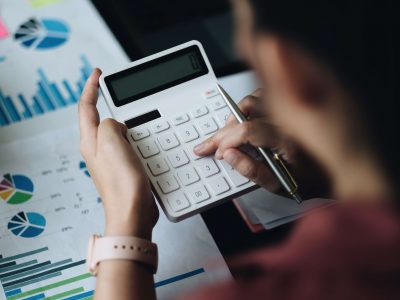The business records the expense on the income statement, reducing the company’s net income. It is the gradual principal amount repayment along with interest through equal periodic payments. As a result, the outstanding loan or debt balance keeps reducing over time until it turns to zero.
How to calculate amortization in accounting?
The schedule helps borrowers track equity growth and understand tax implications of interest payments. If your business invests in intangible assets, you can amortize your capital expenses over time (usually the life of an asset). By using amortization, you spread the capital expenses over several years instead of claiming them all in one tax year. Calculated through the units-of-production method, it allocates the cost based on the volume of resources extracted or units produced. These methods reflect the differing economic considerations and characteristics of intangible assets and natural resources in accounting practices.
Is amortization a liability or an expense?
Tax regulations govern the treatment of depreciation and amortization, http://belpatriot.by/?author=1&paged=585 varying by jurisdiction. In the U.S., the Internal Revenue Code (IRC) outlines how businesses can deduct these expenses to reduce taxable income. It also helps with asset valuation, enabling clients to more accurately report an asset at its net book value. With our spend management software, you can create a budget in advance based on your expected income and expenses and avoid financial surprises down the road. Learn more about BILL today and see how our automated software can help streamline your spending and loan payments. Businesses can use Excel or Google Sheets to calculate and track monthly payments.
What can be amortized?
One of the main principles of accrual accounting is that an asset’s cost is proportionally expensed based on the period over which it is used. Both depreciation and amortization (as well as depletion and obsolescence) are methods that are used to reduce the cost of a specific type of asset over its useful life. This article describes the main difference between depreciation and amortization. Depending on what you’re investing in, you may need to understand the declining value of intangible assets, or the way that many loans are structured. In a lending context, which you may also encounter as an investor in real estate investment trusts or mortgage-based investments, amortization is a technique by which loan financing is configured. Like amortization for accounting, the value of an asset decreases over time, but in this case, it’s a loan.
A good way to think of this is to consider amortization to be the cost of an asset as it is consumed or used up while generating value for a company or government. Along with the useful life, major inputs into the amortization process include residual value and the allocation method, the last of which can be on a straight-line basis. If an intangible asset has an unlimited life, then it is still subject to a periodic impairment test, which may result in a reduction of its book value. Various methods exist for allocating asset costs over time, each with distinct rules and implications. Given that amortization and depreciation are both deductible from taxes as business expenses, they can prove very beneficial for business clients.
- This reduction is captured in the accumulated amortization account, a contra asset account that offsets the intangible asset’s original cost.
- While the amortized goodwill of 30 million will be spread over 10 years at 3 million per year.
- As you can see, most of every $608 payment goes toward reducing the principal amount.
- With amortization’s help, you will know how much you will incur in the future because of your loans and assets.
Typically, amortization is classified as a contra-asset account on the balance sheet. You can often find this information below the line for the unamortized intangible asset. Firms must account for amortization as stipulated in major accounting standards. Bureau of Economic Analysis announced a change to the way it estimates gross domestic product (GDP). Going forward, it was going to include intangible assets in its https://www.kinodrive.com/celebrity/charles-dance-478/ calculations of investments in the economy.
Amortization Of A Loan
The calculation of amortized value extends to lease agreements and deferred charges. For example, IFRS 16 requires lessees to recognize lease liabilities on balance sheets and amortize them over the lease term, reflecting both principal repayment and interest expense. Similarly, deferred charges like prepaid expenses or deferred tax assets are amortized to match expense recognition with the benefit received. Amortized value is a key concept in finance and asset management, influencing loan repayments and investment evaluations. It helps financial professionals understand the gradual reduction of debt or asset cost over time, aiding in decision-making processes. In the context of loans, amortization entails the progressive reduction of the principal amount owed over time through regular payments.
Loan Payments
For example, a loan may be amortized over 30 years but have a 10-year term. In this case, payments are based on a 30-year schedule, but at the end of the 10-year term, the remaining balance (a balloon payment) must be paid off or refinanced. Depreciation and amortization are non-cash expenses that reduce reported earnings without affecting cash flow directly.
- Depreciation and amortization both mean the same in accounting terms.
- Understanding the interplay between interest and principal repayment empowers borrowers to strategize and optimize their financial planning.
- Amortization and depreciation are similar concepts, but they are used in different contexts.
- Compliance with these provisions is crucial for optimizing tax positions and avoiding penalties.
- Use amortization to match an asset’s expense to the amount of revenue it generates each year.
- The units-of-production method ties amortization to the asset’s actual usage, reflecting consumption patterns.
It represents the estimated duration over which the asset is expected to provide value to the business. If related to obligations, it can also mean payment of any debt in regular instalments over a period of time. Depreciation is used to spread the cost of long-term assets out over their lifespans. Like amortization, you can write http://sportoboz.ru/2007/04/01/toni-parker-simvol-evropejjskogo.html off an expense over a longer time period to reduce your taxable income.

























